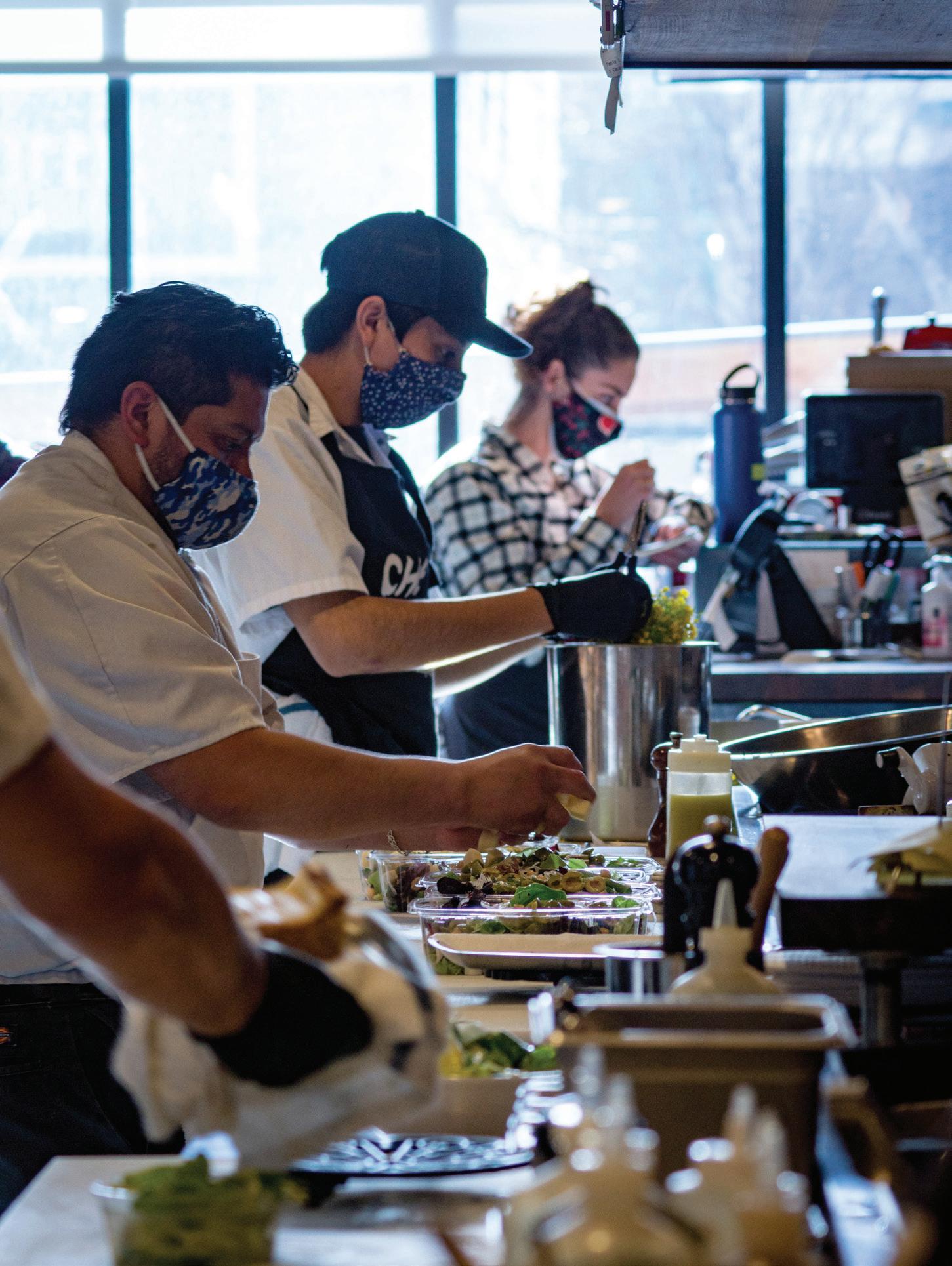
9 minute read
86'd Cooking Up Solutions
In Che Fico Alimentari’s back kitchen, sous chef Alexis Hernandez, left, stretches house-made pizza dough while Jazmine Fenton, right, spreads sauce.
service industry Story by Megan Ogle Photography by Bo Lenschau Illustration by Bobby Ramirez
Advertisement

The clock strikes five as guests begin to arrive at Che Fico Alimentari. They check in with the host who stands outside prepared to discuss all of the COVID-19 rules while simultaneously taking to-go orders. Then the guests are seated at one of six tables in the wooden parklet strung with cafe lights on Divisadero Street. Suddenly the kitchen is in full swing.
Alimentari barely resembles its pre-pandemic self. Before COVID-19, Alimentari’s sister restaurant, Che Fico, was a popular restaurant with a long line of people waiting outside for a table. A year after Che Fico’s inception and just one year prior to the pandemic, owners Matt Brewer and David Nayfeld, opened their second restaurant, Che Fico Alimentari, downstairs. While Che Fico was a fine dining experience with a Californiainspired Italian menu, Alimentari was a smaller, casual eatery by comparison.
Before the pandemic, both restaurants combined would serve close to 500 guests in a night. When the pandemic hit, the owners folded both places into one operation, furloughed 90% of their employees and began serving out of Alimentari only.
With COVID-19 guidelines and regulations constantly changing, restaurants like Alimentari have had to make operational decisions on the fly, with little or no notice.
Many establishments closed their doors permanently as the pandemic dragged on. An estimated 30% of San Francisco neighborhood restaurants shuttered with no plans to reopen according to an article

published in SFgate in January 2021. The list of closures is expansive and includes landmarks like the historic Cliff House and Louis’ and neighborhood staples like Ton Kiang and Muddy Waters Coffee House, where over the past ten years Etc Magazine staff have met to edit stories over coffee and pastries. 5.9 million restaurant industry workers in the U.S. lost their jobs due to the pandemic according to an article published in May 2020 on Eater.com. This percentage does not even include employees who were not on payroll, like many undocumented workers.
The few employees that continued working were considered to be at a very high risk of contracting and dying from COVID-19, according to a University of California, San Francisco study. The study found that kitchen staff, and more specifically, line cooks were at the highest risk.
In spite of this, a handful of cooks and chefs stayed on at Alimentari to help keep its doors open, food on the table and money in their pockets.
Jazmine Fenton, sous chef at Alimentari, never stopped working. “I have definitely had to take on a lot more responsibility...and be able to pivot and change at any moment.”
The switch from fine dining to take-out and to-go is not an easy conversion, impacting everything from menu-item options to workflow management.
When Alimentari first reopened with a pared down kitchen staff they tried to do the full menu as take-out only, but after a week, abandoned that plan.
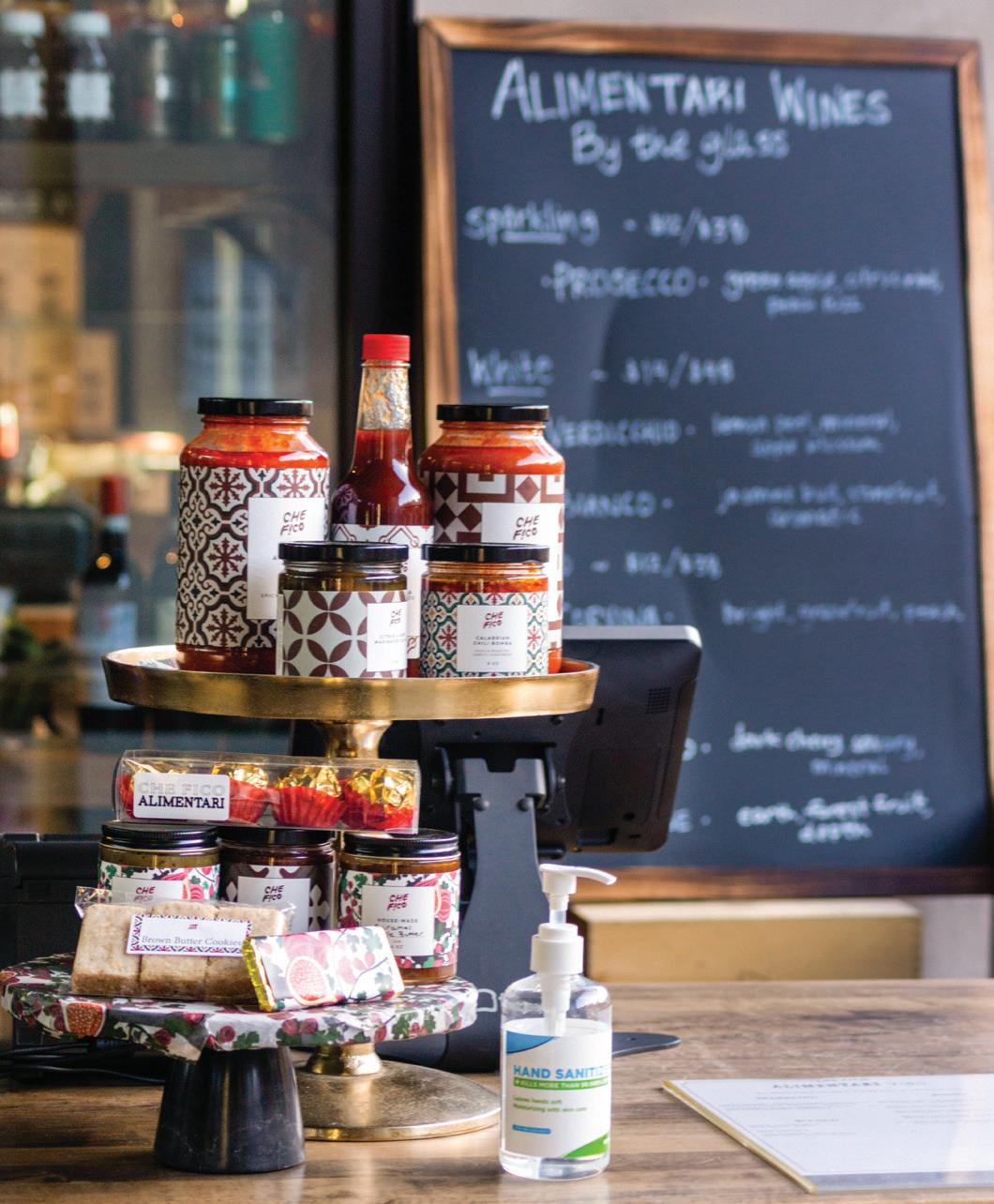
Alimentari sells their own Italian-inspired pantry products including sauces, pastas, cocktails and deserts to generate another stream of income.
In the small kitchen of Birba wine bar, Intu-On Kornnawong creates what she calls “Thai drinking food” to serve at her pop-up restaurant. Birba wine bar hosts Kornnawong’s eponymous pop-up on Sundays. Her cuisine goes well with the variety of fine wines and spirits that Birba offers.
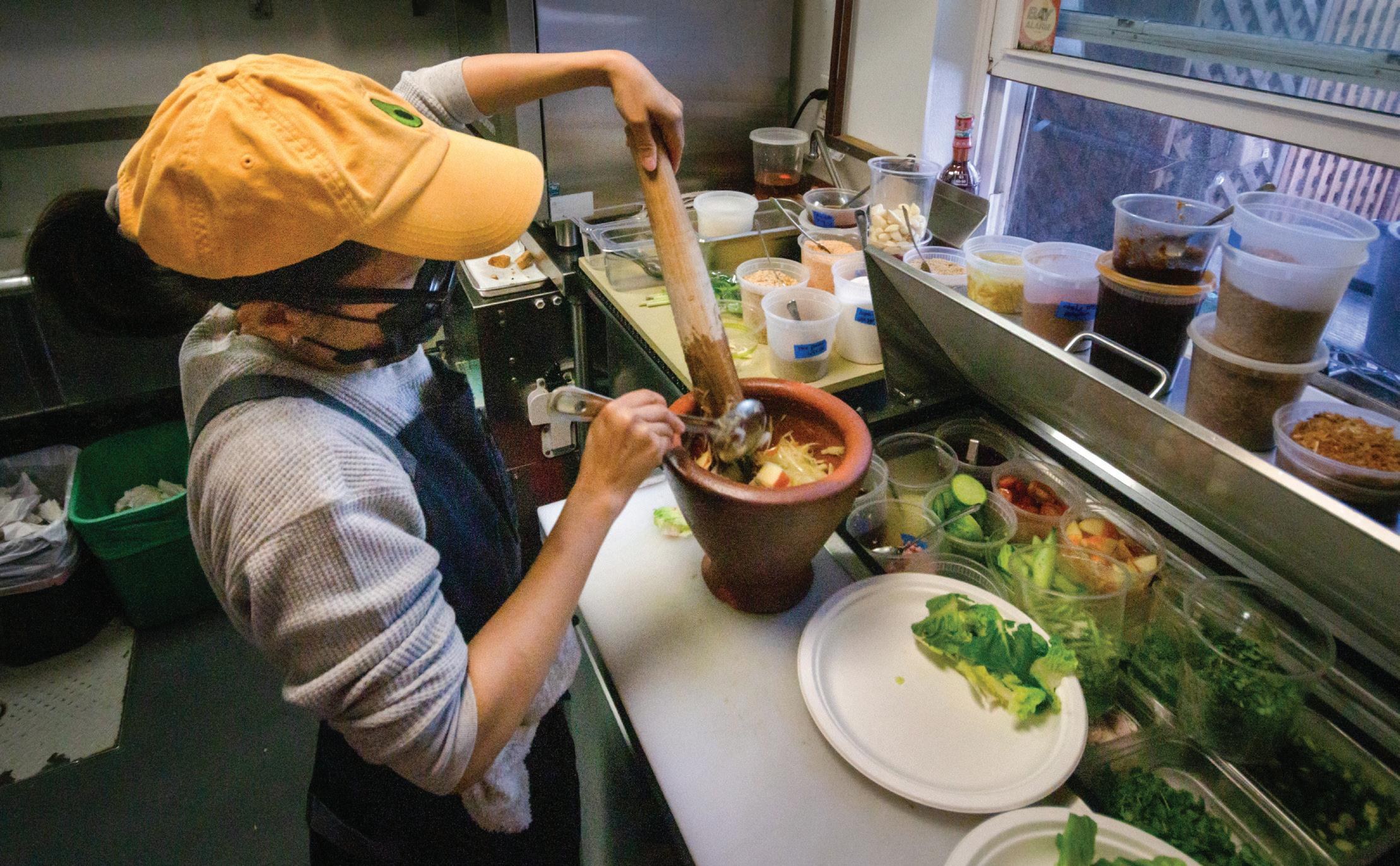
They began a meal donation program offering free meals to anyone in need. It was sponsored by large donations from wealthy patrons. They called this the Family Meal Menu. After about a month, paying customers could order off the Family Meal Menu too.
They were preparing up to 300 meals a day, each feeding two to three people. Alementari Sous Chef and City College alum, JD Herrera, was back in high-volume cooking. “You have to think about logistics a lot differently,” he says.
In August, the Bay Area was coming out of its second COVID-19 surge, and Alimentari switched back to a traditional to-go and take-out format again but with a pared down menu. They built their parklet.
Nobody sits at the chef’s counter anymore to watch the three cooks prepare meals in the open kitchen. Employees use the space to jar and label pantry items for shipment and package to-go orders for delivery. As of April 2021, there are still no indoor diners.
Sous chef Fenton says there is a big difference between preparing in-person dining meals and to-go boxes. “The nature of to-go food is thinking about how these dishes are going to travel,” she says.
The chefs at Alimentari package the food in compostable boxes, each suitable for the dish that is being delivered. Each box is taped shut so nothing spills en route and to show that the food has not been tampered with.
For in-person dining, preparation is very much about presentation because the guest is right there. “The experience is sensory,” Fenton says.
“One of the things that really set us apart, in addition to our food being good, was the atmosphere that we created here,” Hererra says.
“I just don’t think people think about the cogs of the machine, or how many people it takes to make their experience possible,” Fenton says.
If things are not complicated enough, Alimentari now sells pantry products too. Sauces, pastas, cocktails, salamis and even desserts have all been canned, jarred, packaged and labeled by hand. They offer holiday meals and community-supported agriculture boxes that consist of a combination of produce from Bay Area farmers and Alimentari pantry items. This is all while operating with only 10% of their pre-pandemic staff.
Intu-On Kornnawong was laid off in March as sous chef at Kin Kao, a Thai restaurant in the Dogpatch neighborhood. Now she runs her own pop-up and does consulting.
At first the change was upsetting and stressful, but it allowed her the space to focus on her own projects. Before the pandemic, she was reluctant to start her own business, but she was pushed out of her comfort zone and forced to take a leap of faith. “Before I was thinking, ‘Ok, I don’t have money so I need to be at the restaurant, and I need more experience,’” she says.
Intu-On is her eponymous Thai pop-up that takes place at Birba wine bar and retail shop in Hayes Valley every Sunday. Like Alimentari, Birba has a parklet in front. There is also a heated back patio with tables spread safely apart.
Kornnawong creates North-Eastern “Thai drinking food” with California ingredients. She does not play it safe. The food is spicy and acidic and definitely much different than other Thai food found around the city.
“I like to be creating things all the time and COVID pushed me to get out and do something new,” Kornnawong says. She had done pop-ups around the city previously and decided to start again, this time designing her menu to go well with beer and wine. Birba was a perfect match. The wine bar was serving small bites before Intu’s pop-up, but her menu significantly increased their business.

Allison Schaffer, left, hands an order to customer Sitara Gurung, right. A newly built mobile counter by Alimetari’s entrance functions as a space for staff to safely interact with customers.
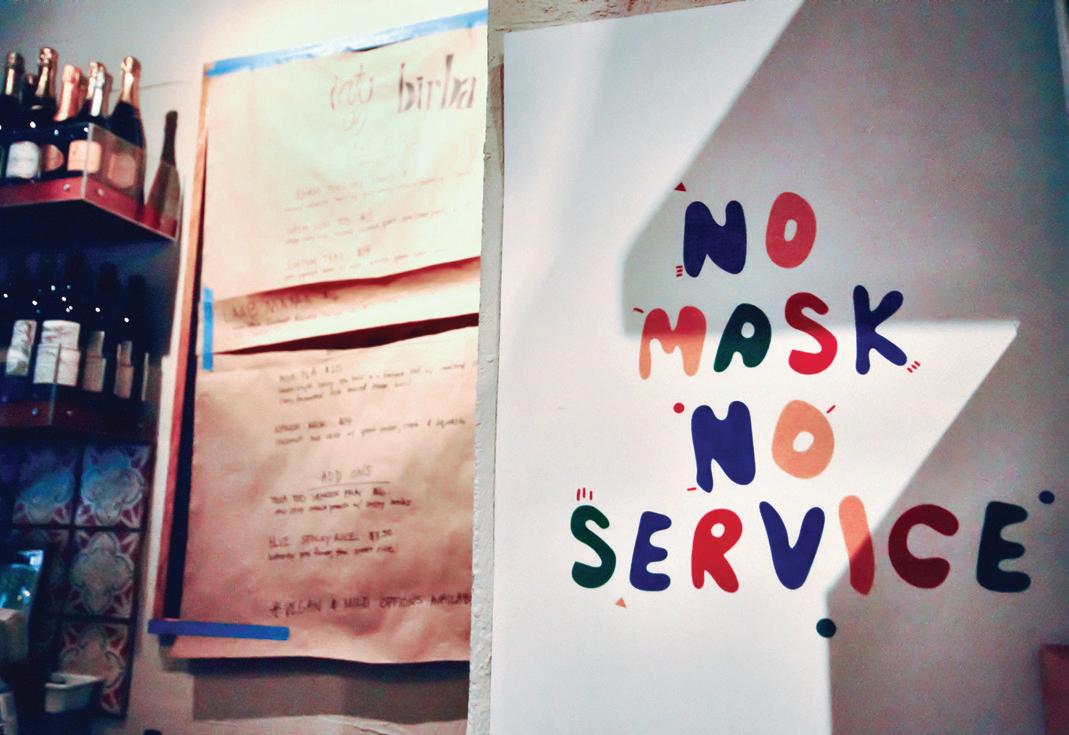
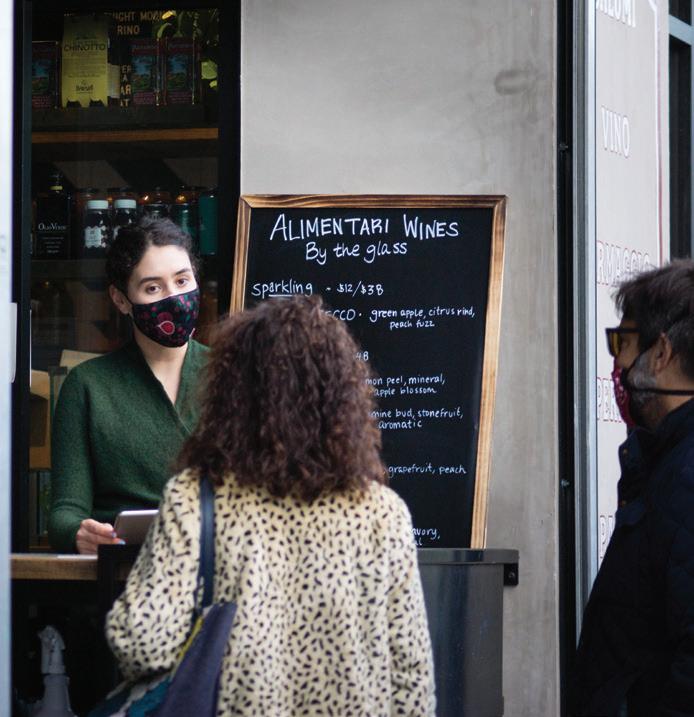
Allison Schaffer, left, takes a to-go order from two customers at Alimentari.
Alimentari’s kitchen spans nearly the entire width of the restaurant, allowing staff members to work side-by-side. The open-concept enables restaurant guests to watch the action while sitting inside, but Alimentari was closed to indoor dining for quite some time.
Erik Harrelson decided on a more extreme career change when he lost his job. He had been head chef at both Radhaus and at Biergarten, German style eateries in Fort Mason and Hayes Valley. He went on to work as a private chef for a wealthy Bay Area family.
When he first lost his job, it did not feel permanent. But as one month became two and so on, he eventually came to terms with the idea that he might not be going back to work for a while.
The pandemic provided Harrelson with the first long-term break of his 23-year career. “Having that much time off made me reevaluate.” He wondered how much of his identity was wrapped up in his job.
While he liked the camaraderie and energy of a restaurant, he did not like the long hours and unspoken expectation of unpaid overtime. He saw three options: Go back to the restaurant when it opens up again, look for a culinary director position which would provide a better work-life balance or go the private chef route. He decided to go with option three. Through a friend he was introduced to a San Francisco family who hired Harrelson to cook for them.
The family is based in San Francisco but decided to move to Hawaii for a few months late in the pandemic. They took Harrelson with them. He did all of the family’s cooking and all of the household shopping.
Cooking privately is a “very different beast,” he says. It required a change in his thought process: There is no set menu. He admits that there was a learning curve. He went from leading a group of forty-plus people to being a one-person team.
Working as a private chef provided Harrelson with a steady income, a stint in Hawaii, and more freedom in his schedule, but there was limited upward mobility. “In a restaurant, the harder you work the more money you make,” he says. However, Harrelson does not see himself going back to work in another chef’s kitchen anytime soon. “Killing myself to put money in someone else’s pocket sounds awful,” he says.
Harrelson, recently let go of his private chef job, is back in the Bay Area looking for what’s next. He started a meal-kit delivery company while in Hawaii and plans to split his time between both places. While he is unsure what the future holds, he is focused on his company in hopes that it takes off. No matter what happens, “I still love to cook,” Harrelson says.
Kornnawong plans to continue with her Sunday pop-up at Birba and hopes to one day own her own restaurant.
By the time this article is published, Alimentari anticipates that they will be serving about 100 diners on-site per night. Fenton is prepared. “We have learned so much about our capabilities that we have the ability in the future to make an even better restaurant than we already have.”
